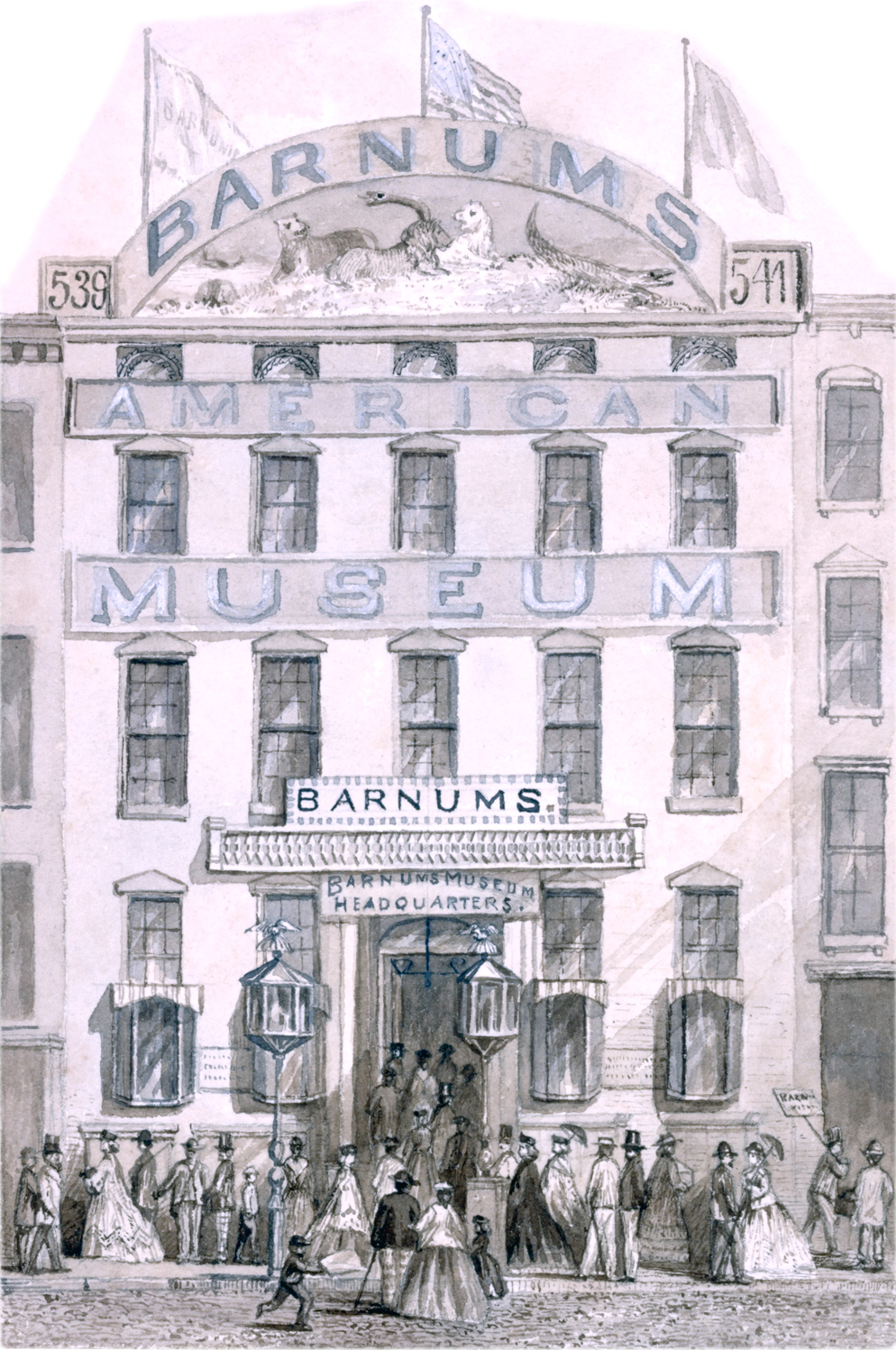
New Barnum's American Museum
The Barnum's New American Museum, on Broadway, between Spring and Prince streets. Watercolor by unknown artist, probably made before September 30, 1865, when a similar engraving was published in Frank Leslie's Illustrated Newspaper, which could have been based on the watercolor above. Source: New York Public Library.
The Barnum's New American Museum opened on September 6, 1865, at 539-541 Broadway, on the west side, between Spring and Prince streets. The building formerly the Costar Mansion, was then known as the "Chinese Hall". It consisted of five large salons and a lecture room.
The American Museum was originally founded in 1790 by the Tammany Society. It was housed in historic buildings, like the old City Hall on Wall Street, the old Exchange at the foot of Broad Street, the Alms House near the City Hall Park and the 5-story marble building on the corner of Broadway and Ann Street. This historic building was erected by 1830 and was originally owned by the John Scudder heirs. Phineas Taylor Barnum (1810–1891), acquired the building in 1841 and made it a famous entertainment venue. Unfortunately, the iconic structure was burned to the ground in 1865.
In the same year, Barnum opened a new American Museum at 539-541 Broadway (illustration above). It was also destroyed by fire in the morning of March 3, 1868. Below, some text from the Frank Leslie's Illustrated Newspaper (September 30, 1865) about the new American Museum:
«Having in a previous number illustrated the destruction of the old American Museum, we think it only due to the amusement-loving public, to illustrate the successor to that world-famous institution−Barnum's Museum−which has now traveled from the corner of Ann to midway between Prince and Spring streets, Broadway. It is a spot long known to New Yorkers as the Chinese Hall, where 16 years ago the elder Patti charmed the ears of concert-goers, and where four or five years later the Buckley Minstrels produced those capital burlesque operas, which grotesque miscegenation of the Italian and darkey operas was the crowning triumph of burnt cork and melody. In future times, however, it will be more famous as the Carthage to which the modern Eneas carried his scorched Penates, preparatory to founding a grander empire higher up town, which shall represent more the national character. To accomplish so great an object, Mr. Barnum can confidently rely upon the co-operation of the Government, as well as that of the people.
The new Museum, which is situated at 539 and 541 Broadway, consists of five long saloons, and a splendid Lecture Room−of which we give an exact representation. The stage of this room is 50 feat wide, by 46 feet deep, and the auditorium is about 80 feet deep, and calculated to hold 2,500 persons. The decorations are very elegant. Among the great advantages of the present building, is the rapid egress in case of any emergency, as ample doors on both ends enable the entire audience to pass out in five minutes.
Considering the brief space of time occupied in fitting up the present building, the variety and number of curiosities Barnum has succeeded in gathering together, are decided proofs that he is still the most energetic and able manager of the time. As evidence of his activity, we may mention, that long ere the ruins of his old Museum were cold, he had dispatched agents to Europe to gather up, without any regard to cost, every article of purchaseable curiosity they could find. He is about proceeding himself to the old world to continue the search in person.»

New Barnum's American Museum
|
Copyright © Geographic Guide - Old NYC. 19th Century Historic Buildings. |
